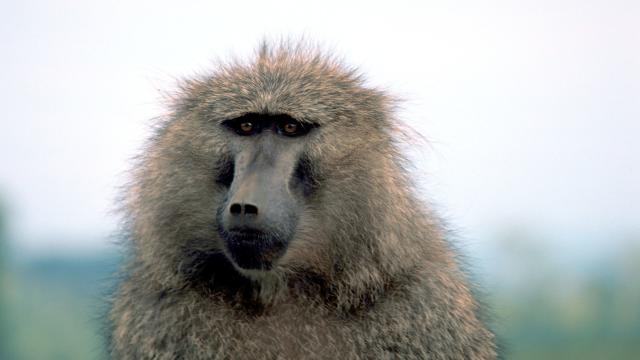A baboon survived 195 days after an experimental heart transplant, according to a new paper. But the heart didn’t come from another baboon — it came from a pig.
There are far more people who desperately need organ transplants than there are donor organs available—nearly 4,000 Americans are currently waiting for a heart, for example. Scientists have proposed transplanting organs between species, or xenotransplantation, as a way to overcome these shortages. This research will certainly spark some discussions, but is a major milestone.
“Transplantation prolongs life and adds a high, almost unrealistic quality of life, if you can do it,” study author Bruno Reichart from LMU Munich in Germany told Gizmodo. “So why not a [pig] heart? It’s very similar to our own heart.”
Past research has demonstrated that xenotransplantation is quite difficult, and the only past success the authors could find in their literature review was a single case of a baboon surviving 57 days. More recently, a baboon survived 945 days with a pig’s heart hooked up to its circulatory system, though that heart didn’t replace the baboon’s own heart.
In the most recent study, baboons received genetically modified pig heart transplants and were given an immunosuppressant to minimise the chances that their body would reject the new heart. The first group of three baboons died shortly after transplant; they’d received hearts stored without blood for two hours.
The researchers then minimized the amount of time that the transplant heart was disconnected from a blood supply by hooking the organs up to a mechanical lung system that provided nutrients. Three of the four baboons in this second group survived for 18, 27, and 40 days — but died because the hearts grew too large. Pigs grow much faster than baboons do, and the pig hearts did as well.
Finally, the researchers lowered the baboons’ blood pressure to match that of pigs and gave them a drug called temsirolimus that can be used to slow the heart growth. Of the five baboons in the third group, one died of a blood clot after 51 days. The four remaining survived for 90, 90, 182, and 195 days — all of them were euthanised as required by prior approval and laboratory animal guidelines. Only one, the baboon who survived for 182 days, showed signs of cardiac disfunction, according to the study published in Nature.
One researcher not involved with the study, Muhammad Mohiuddin, professor of surgery at the University of Maryland School of Medicine, told Gizmodo that the research is very important and is the first time a genetically engineered pig heart has been shown to support a baboon for six months.
But he noted that one of the antibodies used in the study, called CD40, is not yet approved by the FDA, and he wondered what other chemicals were in the solution that kept the heart alive outside of the pig, and what their roles were.
You’ll notice that a lot of baboons died during the course of the study. One medical ethicist, Carolyn Neuhaus at the Hastings Center Bioethics Research Institute, explained to Gizmodo that ethics committees require “humane endpoints” to ensure that the animals don’t experience too much pain. These reviews consider whether the research is truly worthwhile for humans—in this study’s case, the researchers aren’t tinkering with baboons for fun, but trying to find a solution that would save human lives.
Such a study is ethical if and only if the researchers stick to pre-approved guidelines. Reichart told Gizmodo that the study followed the recommendations of an advisory board, the animals were kept occupied, and that primatologists involved with the study thought the animals were behaving normally after the heart transplantation.
But more importantly, Neuhaus told us that the study should make us think about the future. Are we willing to industrially farm pigs, not only for meat, but for their organs as well? Are we willing to combine two already mistrusted industries, pharmaceuticals and livestock?
And finally, the researchers state that they’ve demonstrated “consistent survival of life-supporting pig hearts” that meets the requirements given in a report authored by the International Society for Heart and Lung Transplantation. But that report was drafted in 2000.
“What the report was based on 18 years ago has almost definitely changed,” said Neuhaus. “There’s an eagerness in the paper that might need to be checked against current [scientific understanding], and also how to best protect humans in what will be quite groundbreaking and very risky research.”
There’s certainly more work before the researchers will be ready to attempt to transplant porcine hearts into humans—and further discussions about the ethics of the practice. But such a future might not be so far away.
[Nature]
